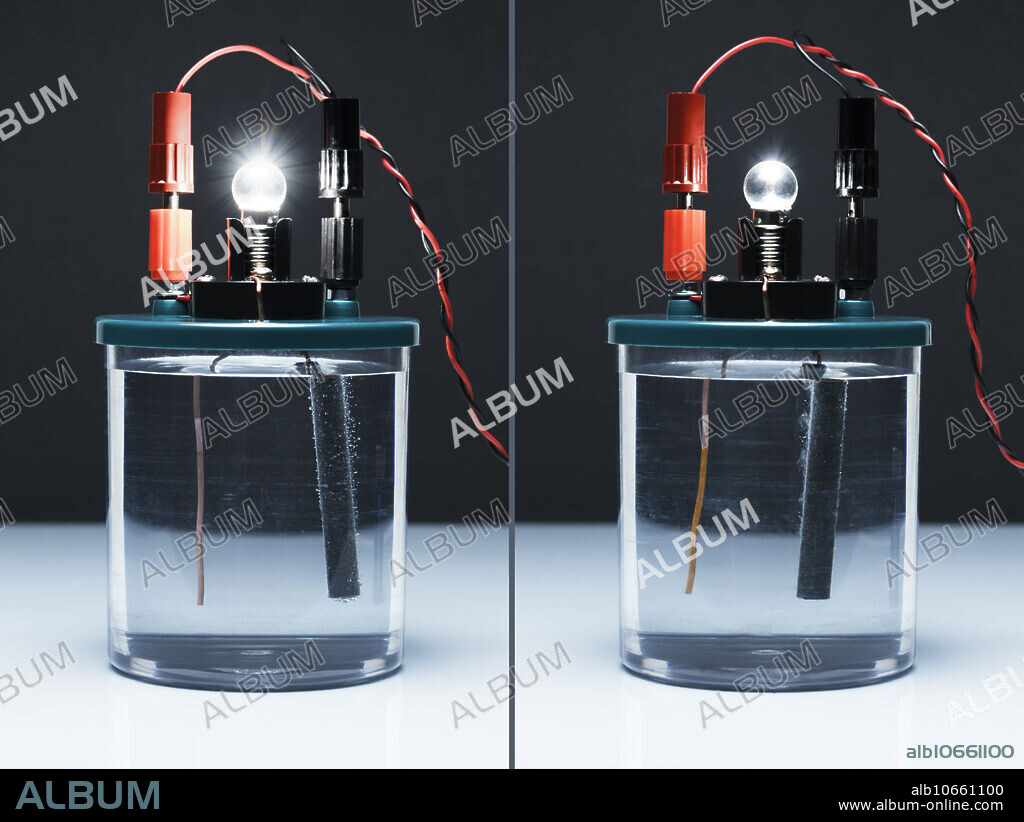alb10661100
Electrical conductivity comparison

|
Ajouter à une autre Lightbox |
|
Ajouter à une autre Lightbox |



Avez-vous déjà un compte? S'identifier
Vous n'avez pas de compte ? S'inscrire
Acheter cette image.
Sélectionnez l'usage:

Titre:
Electrical conductivity comparison
Légende:
Voir la traduction automatique
Electrical conductivity comparison. A solution conducts electric current when it contains charged particles (ions). A circuit consisting of a battery, two electrodes (copper and graphite) in a jar, and a light bulb is used to test electrical conductivity of different solutions. When the jar is filled with 0.1 M hydrochloric acid (HCl), the bulb lights up brightly (left frame). Hydrochloric acid is a strong acid and a strong electrolyte, it completely dissociates into H+ and Cl- ions that carry electric charges in the solution. When the jar is filled with 0.1 M acetic acid (CH3COOH), the bulb lights up but less brightly than with hydrochloric acid (right frame). Acetic acid is a weak organic acid and a weak electrolyte, it only partially dissociates into H+ and CH3COO- ions. Therefore, for the same molar concentration, acetic acid produces a lower concentration of ions needed to carry electric charges in the solution.
Crédit:
Album / Turtle Rock Scientific/Science Source
Autorisations:
Taille de l'image:
5800 x 4356 px | 72.3 MB
Taille d'impression:
49.1 x 36.9 cm | 19.3 x 14.5 in (300 dpi)
Mots clés:
ACIDE • ACIDITE • AMPOULE ELECTRIQUE • CHIMIE • ELECTRICITE • ELECTROCHIMIE • GLOBE • PHYSIQUE ELECTRICITE • SCIENCE: CHIMIE • VINAIGRE
 Pinterest
Pinterest Twitter
Twitter Facebook
Facebook Copier le lien
Copier le lien Email
Email
